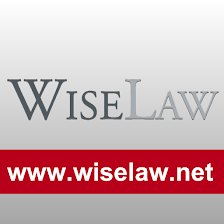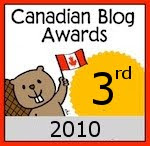 In a decision released on January 7th 2008 the Ontario Court of Appeal has ruled that a doctor owed no duty of care to future children not to cause them harm in prescribing a fertility medicine to their mother.
In a decision released on January 7th 2008 the Ontario Court of Appeal has ruled that a doctor owed no duty of care to future children not to cause them harm in prescribing a fertility medicine to their mother.
The brief facts of the case giving rise to the law suit and the appeal are that the Respondent, Carolyn Bovingdon, consulted the Appellant, Dr. Hergott, an obstetrician, when she failed to begin ovulating after discontinuing birth control pills. Dr. Hergott prescribed the fertility drug Clomid. After taking the prescribed course of Clomid, Ms. Bovingdon conceived and gave birth to severely disabled premature twins. The Clomid was found to be the first link in a chain of causation that led to the conception of the twins, the premature birth of the twins and the damage caused to them as a result of their premature birth.
The action against Dr. Hergott was based on his failure to provide all the necessary information to allow Ms. Bovingdon to make an informed decision whether to take Clomid, the extent of the increased risk of having twins by taking the drug, the potential for premature birth when carrying twins and the consequent injury this might cause to them.
The jury found the doctor negligent for failing to provide the necessary information to the mother. Following those findings, the trial judge ruled as a matter of law, that the doctor also owed a duty of care to the twins. Because he breached that duty, they as well as their parents were entitled to recover damages. The trial judge concluded that the claim by the twins did not come within the category of action known as “Wrongful Life” (the law in Canada does not recognize a cause of action for “Wrongful Life”) because this was not a case where the doctor’s negligence only caused the twins to be born, the doctor’s negligence also caused their damage.
The trial judge reasoned that the Clomid caused the twinning, the twinning caused the prematurity, and the prematurity caused the damage to the children. Therefore, the Clomid caused the damage and since the doctor had prescribed the Clomid without warning the mother of the risks, the doctor had thereby caused the harm to the children. The judge concluded that the case was therefore not an action for wrongful life, but one where the doctor was responsible for the damage and therefore the twins had a cause of action for damages.
The Court of Appeal upheld the trial court’s ruling of negligence against Dr. Hergott for failing to provide the necessary information to the mother, but reversed its decision on the issue of Wrongful Life and Duty of Care owed to the twins.
Writing for a unanimous bench, Madam Justice Feldman wrote:
The common law world has struggled for the past several decades with the debate over whether a child born with defects or injuries suffered in utero or upon conception can sue a doctor for negligence. In deciding whether to recognize a “wrongful life” claim, the key question is, if a child would not have been born at all without the doctor’s negligence, can such a child sue the doctor for the value of the difference between a life burdened with physical or mental defects and no life at all? How can the child be compensated for being born? How can a court give damages that measure the value of no life versus a damaged life? And from a metaphysical point of view, does it make sense to allow such an action, given that if the child had not been born, he or she would not have been able to bring the action at all?”
The Court of Appeal held:
“Clomid had no pharmacological effect on the children. Dr. Hergott did not cause the damage to the children. Rather, by failing to give Mrs. Bovingdon all the information she needed to decide whether to take the drug to augment her fertility, he caused or contributed to the birth of the twins.”
The court concluded that because the doctor did not cause the harm to the twins, the trial judge erred by finding that this was not a case of Wrongful Life.
Although the court found that the children’s claim against the doctor fell into the category of claims designated as “wrongful life,” and therefore no claim was made out on behalf of the twins, the court left it open by commenting:
“Furthermore it is undecided whether the courts of this province would necessarily dismiss every claim for “wrongful life”.
In any event the court also found that Dr. Hergott owed no duty of care to the twins, who therefore had no cause of action against him. The court held:
“The Appellant had no duty of care to the future children not to cause them harm in prescribing Clomid to the mother. The doctor owed a duty of care only to the mother, which duty consisted of ensuring that she possessed knowledge sufficient to make an informed decision whether to take Clomid. This knowledge included the increased risk of conceiving twins arising from the drug, the increased potential for premature birth in a twin pregnancy, and the possible harm to the children that could result from premature birth.”
Justice Feldman further wrote:
“Because I have concluded that there was no duty of care and therefore no cause of action by the twins, it is not necessary for me to decide whether and in what circumstances the courts of this province may recognize a cause of action for “wrongful life.”
Full text of the decision: Bovingdon v. Hergott
- Shashi K. Raina, Toronto
Visit our Toronto Law Firm website: www.wiselaw.net
EMPLOYMENT LAW • CIVIL LITIGATION • WILLS AND ESTATES • FAMILY LAW & DIVORCE




















 Robert Ambrogi
Robert Ambrogi 





